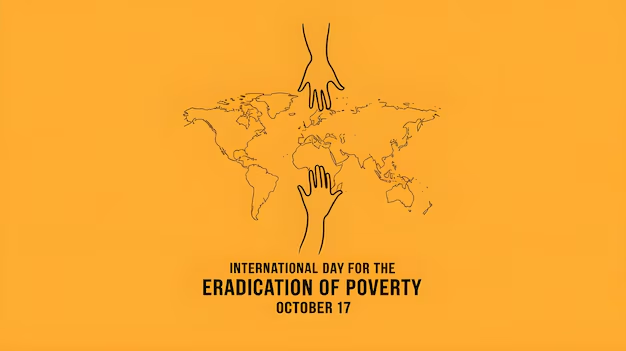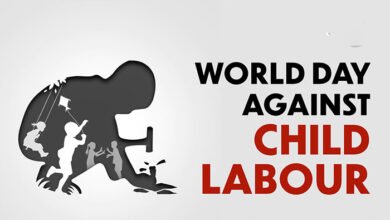International Day for the Eradication of Poverty 2025: Breaking the Cycle for the Sake of Our Precious Children

Every year on October 17, the world observes the International Day for the Eradication of Poverty, a day dedicated to raising awareness about the persistence of poverty and the urgent need to eliminate it in all its forms everywhere.
Poverty is not just a lack of income; it is a condition that strips people of dignity, opportunity, and basic human rights. It manifests in social exclusion, discrimination, hunger, malnutrition, and limited access to essential services such as healthcare, housing, clean water, and education.
This observance reminds us that poverty is not inevitable, it is the result of structural inequalities that can be overcome through empathy, fair policies, and collective determination. Established by the United Nations, the day calls on individuals, organizations, and governments to reaffirm their commitment to building a world where no one is left behind.
Background
According to the 2025 Global Multidimensional Poverty Index (MPI) by the UNDP and the Oxford Poverty and Human Development Initiative, around 887 million people, nearly 80% of the world’s multidimensionally poor, live in areas vulnerable to at least one major climate hazard such as drought, flooding, or extreme heat.
More than half a billion people live in multidimensional poverty in countries affected by violent conflict, further compounding their suffering.
In an age of unprecedented technological progress and economic capacity, it remains morally unacceptable that millions continue to live in severe deprivation. Poverty is not just an economic condition but a multifaceted crisis that denies individuals their fundamental human rights and opportunities for a decent life.
People living in poverty face interconnected hardships that perpetuate exclusion and vulnerability, including:
- Hazardous and insecure working conditions
- Inadequate housing and nutrition
- Limited or unequal access to justice and healthcare
- Restricted education and political participation
Theme for 2025
The 2025 theme, “Ending social and institutional maltreatment by ensuring respect and effective support for families,” emphasizes that scarcity alone is not poverty, poverty is also stigma, invisibility, and exclusion.
This theme challenges societies to end the social and institutional neglect of people experiencing poverty. It calls for compassion, dignity, and policies that protect and empower families rather than punish or marginalize them.
Poverty’s Impact on Children: The Hidden Crisis
While poverty affects all age groups, its toll on children is particularly devastating and long-lasting. Childhood poverty sets in motion a cycle of disadvantage that can last generations, denying millions of children their right to survive, learn, and thrive.
Across Africa, Asia, and other developing regions, millions of children grow up in poverty that robs them of access to the most basic amenities; clean water, nutritious food, shelter, healthcare, and education.
The Harsh Realities
- Substandard living conditions: Many children live in unsafe or overcrowded housing, lacking proper sanitation and clean drinking water.
- Health challenges: Malnutrition, preventable diseases, and inadequate healthcare weaken children’s physical and cognitive development.
- Limited educational access: Millions of children are out of school because their families cannot afford fees, uniforms, or supplies, or because schools are too far or poorly equipped.
- Psychological effects: Growing up in poverty exposes children to chronic stress, insecurity, and social stigma, which affect emotional well-being and brain development.
According to UNICEF, children account for more than half of those living in extreme poverty globally. Poverty in early childhood affects brain development, cognitive function, and emotional regulation, with consequences that extend into adulthood.
Psychological research further reveals that children from low-income households often show differences in brain structure and function in areas linked to learning, memory, and language which are key skills for academic achievement and social mobility.
The Education Connection
Education remains one of the most powerful tools for breaking the cycle of poverty. Yet, for millions of children, quality education is still out of reach.
How Poverty Impacts Education
- Financial barriers: Many families cannot afford school-related costs such as uniforms, textbooks, and transportation, forcing children to work instead of learn.
- Under-resourced schools: Children in impoverished communities attend overcrowded schools lacking qualified teachers, adequate materials, and technology.
- Health and nutrition issues: Poor health and hunger impair concentration, attendance, and academic performance.
- Early disadvantages: The absence of early childhood education and enriching environments leads to delayed cognitive and emotional development.
How Education Reduces Poverty
- Breaking intergenerational cycles: Education provides skills and opportunities for better-paying jobs, enabling families to rise out of poverty.
- Economic growth: Higher education levels, especially in science and technology, directly contribute to national productivity and innovation.
- Improved well-being: Educated individuals tend to have better health outcomes, lower crime rates, and greater civic participation.
According to UNESCO, if all children in low-income countries left school with basic reading skills, more than 170 million people could be lifted out of extreme poverty.
Global Call to Action
To eradicate poverty and protect the world’s most vulnerable children, societies must take bold, inclusive, and sustained action:
- Invest in early childhood education and nutrition programs.
- Strengthen social protection systems to shield families from economic shocks.
- Improve school infrastructure and teacher training, especially in rural and marginalized areas.
- Reduce education costs to make learning accessible to every child.
- Empower communities to participate in local development and decision-making processes.
Why This Day Matters
The International Day for the Eradication of Poverty serves as a global reminder that poverty is a violation of human rights and dignity. It fosters dialogue between people experiencing poverty and the wider community, honouring their resilience and leadership in the fight for justice and inclusion.
It also advances key goals such as:
- Raising awareness of poverty’s root causes and consequences
- Promoting social justice and inclusive policies
- Upholding human dignity and equality
Ways to Mark the Day
Around the world, the day is commemorated through activities that promote solidarity and awareness, such as:
- Community discussions, lectures, and advocacy campaigns
- Educational events, art exhibitions, and school essay competitions
- Fundraisers for child welfare and poverty reduction programs
- Volunteering efforts such as food drives and outreach projects
- Social media campaigns with hashtags like #EndPoverty and #EveryChildMatters
Conclusion
The International Day for the Eradication of Poverty is not only a time for reflection but a call to global action. Poverty is not destiny, it is a challenge we can overcome through compassion, commitment, and collective effort. A truly just world is one where every child has access to education, healthcare, and hope, where poverty does not determine potential, and where dignity is not a privilege but a universal right.





